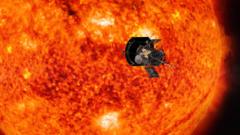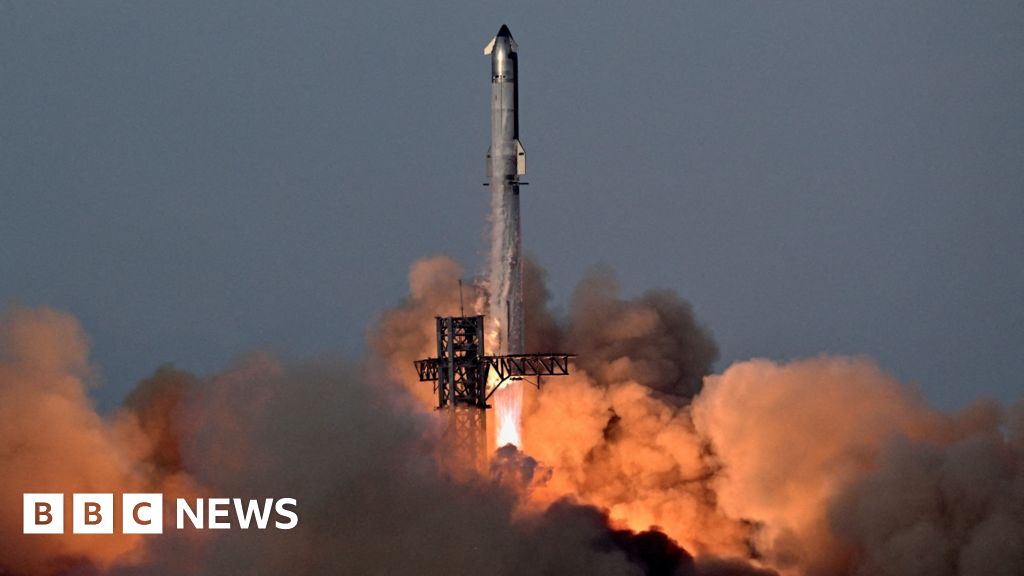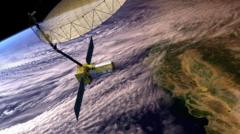The Parker Solar Probe, launched by NASA in 2018, is set to achieve a milestone by making the closest-ever approach to the Sun, plunging into the star's outer atmosphere. This daring mission aims to collect data on solar activity and enhance our understanding of solar phenomena while battling extreme temperatures and radiation during its fly-by.
The probe's historic encounter on Christmas Eve will bring it within a mere 3.8 million miles (6.2 million km) of the Sun’s surface. To put this into perspective, while Earth is approximately 93 million miles away, if scaled down to one meter, the Parker Solar Probe would be just four centimeters from the Sun. This proximity demands that the spacecraft endure scorching temperatures of up to 1,400° Celsius and intense radiation that poses a threat to its instrumentation.
Protected by a formidable 4.5-inch thick carbon-composite shield, the Parker Solar Probe will navigate through the scorching environment at a staggering speed of 430,000 miles per hour—equivalent to the time it takes to fly from London to New York in less than half a minute. The mission is particularly focused on uncovering the enigma of the Sun's corona, which remains significantly hotter than its surface, and understanding the solar wind that can impact our planet's magnetic field, causing beautiful auroras but also potential technological disruptions.
Dr. Jenifer Millard, an astronomer involved in the mission, highlights that comprehending the reasons behind the extreme heat of the corona is vital for solar science. Meanwhile, Dr. Nicola Fox, leading the science efforts at NASA, expresses optimistic anticipation for the signal expected on December 27, indicating that the probe has successfully made it through this audacious journey.
As the team at NASA waits in anticipation for news from the field, they are fully aware of the challenging conditions faced by the spacecraft. Fox assures that the probe is designed to withstand critical challenges. The outcome of this mission could unlock essential solar mysteries and provide invaluable insights into the solar influences affecting life on Earth.
The probe's historic encounter on Christmas Eve will bring it within a mere 3.8 million miles (6.2 million km) of the Sun’s surface. To put this into perspective, while Earth is approximately 93 million miles away, if scaled down to one meter, the Parker Solar Probe would be just four centimeters from the Sun. This proximity demands that the spacecraft endure scorching temperatures of up to 1,400° Celsius and intense radiation that poses a threat to its instrumentation.
Protected by a formidable 4.5-inch thick carbon-composite shield, the Parker Solar Probe will navigate through the scorching environment at a staggering speed of 430,000 miles per hour—equivalent to the time it takes to fly from London to New York in less than half a minute. The mission is particularly focused on uncovering the enigma of the Sun's corona, which remains significantly hotter than its surface, and understanding the solar wind that can impact our planet's magnetic field, causing beautiful auroras but also potential technological disruptions.
Dr. Jenifer Millard, an astronomer involved in the mission, highlights that comprehending the reasons behind the extreme heat of the corona is vital for solar science. Meanwhile, Dr. Nicola Fox, leading the science efforts at NASA, expresses optimistic anticipation for the signal expected on December 27, indicating that the probe has successfully made it through this audacious journey.
As the team at NASA waits in anticipation for news from the field, they are fully aware of the challenging conditions faced by the spacecraft. Fox assures that the probe is designed to withstand critical challenges. The outcome of this mission could unlock essential solar mysteries and provide invaluable insights into the solar influences affecting life on Earth.


















